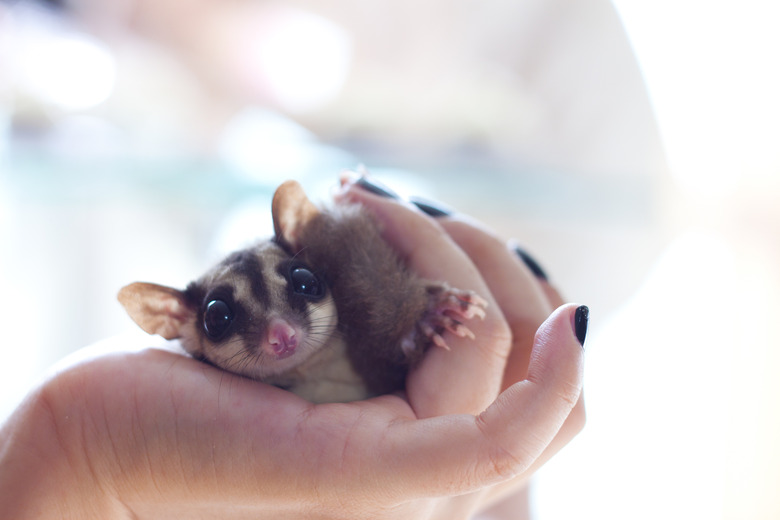How To Tell The Sex Of A Pet Sugar Glider
The sugar glider is a small, tree-dwelling marsupial originally from Indonesia and New Guinea. Due to their diminutive sizes of approximately 4 ounces and their ability to form close bonds with human caretakers, sugar gliders have become increasingly popular as pets in the United States since they were first introduced in 1994. However, they are illegal as pets in certain US states including California.
Sugar gliders of either sex can make affectionate companions for their human owners. But do not keep two males together. Determining the difference between male and female sugar gliders is easiest if you turn them over and look for either a pouch or a scrotum. Sugar glider boys and girls are obvious if you know what to look for.
Sugar glider pouch
Sugar glider pouch
Because sugar gliders are marsupials, the easiest way to discern a female sugar glider from a male is by the presence or absence of an abdominal pouch with four teats where the babies will develop. The pouch is a vertical 1/2 inch opening on the female's abdomen. If there is no pouch, the glider is male.
Females mature between six and 18 months of age and are capable of breeding until the age of eight. Spaying a female sugar glider is not recommended due to her intricate reproductive system. Specifically, the female sugar glider has two uteri and two vaginas that enter into a common pouch. Gestation for sugar gliders is 15 to 17 days.
Sugar glider boys and girls
Sugar glider boys and girls
Male sugar gliders can be differentiated from females by the presence of the scrotum, which is located on the glider's abdomen and looks like a wart or fleshy button. This is likely the most obvious difference between male and female sugar gliders.
Note that the male sugar glider's bifurcated (forked) penis resembles a long, thin worm and might be mistaken for a dislocated intestine by inexperienced owners. Though males can be neutered, this procedure ultimately will have little impact on a sugar glider's disposition.
Sugar glider scents
Sugar glider scents
The male sugar glider has scent glands on the front of his head, and also on the chest and anus. Each sugar glider has his own scent that others recognize. As long as the male sugar glider is kept in a clean, well-maintained environment, the sugar glider will exude only a faint, musky odor. Males can be altered and will reach maturity between four and 12 months of age.
Neutering the sugar glider renders his scent glands inactive. Bald spots located over the scent glands will fill in with new hair once the procedure is complete. Male sugar gliders who are altered before maturity will not develop bald spots.
Sugar glider behavior
Sugar glider behavior
Sugar gliders can make excellent pets, no matter their gender. They are territorial, however, and if a glider owner plans to neuter a male, it should be done before the age of three months, when a glider potentially will reach sexual maturity. This will prevent marking behaviors and attempts to copulate with female companions.
Gliders are social and should be kept in pairs or groups of six to ten, as they would in the wild. The younger the pair or grouping is, the easier it will be for them to grow accustomed to each another. Neutered males can be kept together, but unaltered males might harm one another, so it is best to keep them separated if they are used for breeding purposes. Usually, in the wild, sugar gliders live in groupings of one male and several females.
